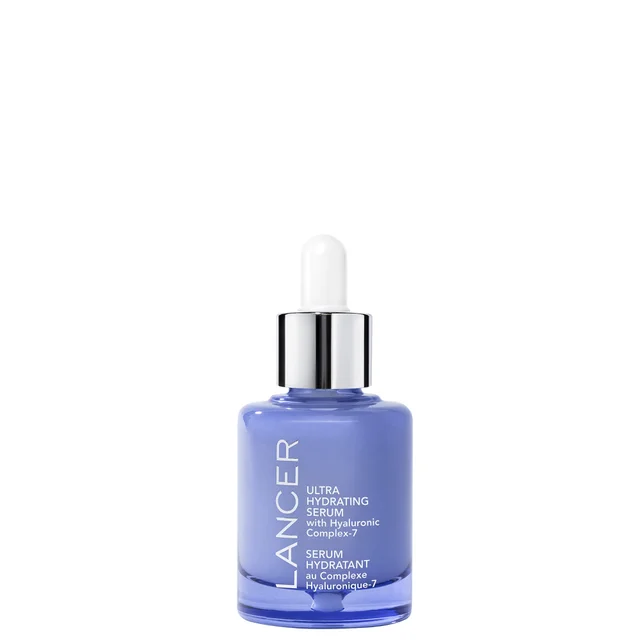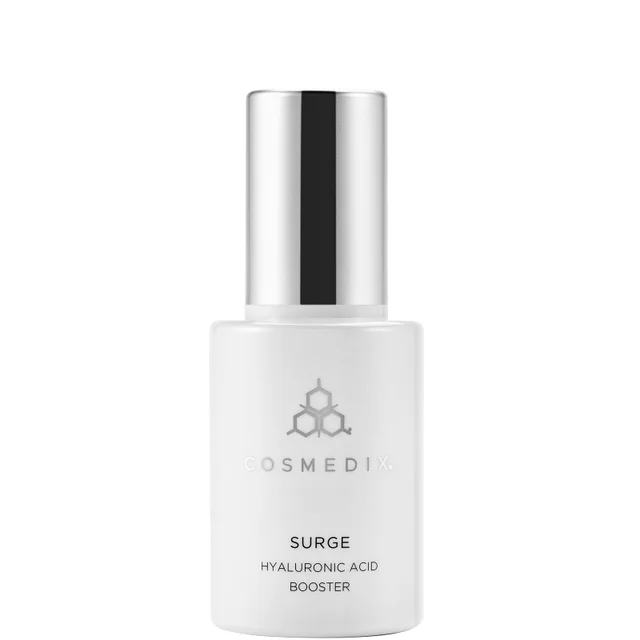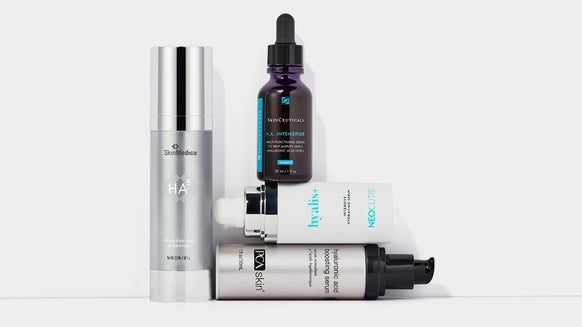The 10 Best Anti-Wrinkle Serums for the Ultimate Anti-Aging Benefits
Stopping wrinkles and fine lines dead in their tracks isn’t always easy, but with the right face serums, they can be slowed down and softened. Some of the best serums for wrinkles and fine lines also improve your overall skin care regimen thanks to their versatility and variety. Whether you layer them with moisturizers, night creams, or masks, the right serum can dramatically improve the look of fine lines.
But with all the different types for lines and wrinkles and many anti-aging ingredients available, it can be difficult to figure out which ones can give your skin much-needed rejuvenation. That’s why it’s important to understand your skin type and its needs so that you can find the best anti-wrinkle serum.
Meet the Experts
Dr. Rhona Klein - Board-certified dermatologist based in Westport, Connecticut Dr. Hannah Sivak - Ph.D and author of The Scientific Revolution in Skin Care Dr. Heather Bennett - Esthetician at Beverly Hills Rejuvenation Center
Our Top Anti-Wrinkle Serums Picks
Best for Neutralizing Redness: jane iredale HydroPure Color Correcting Serum with Hyaluronic Acid and CoQ10 Best for Post-Procedure Skin: SENTÉ Hydrate+ Serum Best for Mature Skin: Lancer Skincare Ultra Hydrating Serum with Hyaluronic Complex Best for Acne-Prone Skin: NeoCutis HYALIS+ Intensive Hydrating Serum Best for Plumping: SkinMedica HA5 Hydra Collagen Replenish + Restore Hydrator Best for Dry Skin: SkinCeuticals Hydrating B5 Gel Best for Sagging Skin: Dr Dennis Gross DermInfusions Fill + Repair Serum Best for Dehydrated Skin: COSMEDIX Surge Hyaluronic Acid Booster Best for Firming: NEOSTRATA Skin Active Tri-Therapy Lifting Serum with Hyaluronic Acid Best for Dull Skin: ISDIN Isdinceutics Hyaluronic Concentrate Hydrating Serum
Key Ingredients to Target Wrinkles and Fine Lines
Figuring out what your skin needs is the best way to choose a serum that targets wrinkles. These are the best anti-aging serum ingredients, working to keep the skin plump and well hydrated while boosting its defenses against environmental aggressors to keep signs of aging at bay.
Vitamin C: Known for its essential role in boosting collagen synthesis, vitamin C can leave the skin stronger, firmer and brighter. It’s also a potent antioxidant that “can help reduce skin damage caused by free radicals, thereby reducing fine lines and wrinkles and improving texture,” Dr. Klein explains. Hyaluronic Acid: A powerful humectant or moisture-binding ingredient, hyaluronic acid helps the skin retain moisture and induces collagen remodeling, leading to plump, hydrated skin, says Dr. Klein. Peptides: A high concentration of peptides in a serum will help stimulate collagen and elastin growth for increased strength and elasticity while encouraging skin healing and remodeling to smooth away fine lines and wrinkles. Epidermal Growth Factor: Epidermal growth factor is a molecular chain of amino acids that aids in healing and wound recovery. It works by stimulating tissue repair and cell growth at a cellular level and encourage the formation of collagen and elastin fibers, explains Dr. Klein. Stem Cell: While stem cells can’t regenerate the skin or magically erase wrinkles, they can help “protect your skin against sun damage, prevent wrinkles and induce collagen synthesis,” Dr. Klein says. Retinol/Vitamin A : “Retinoids bind to nuclear receptors and modify gene expression,” says Sivak. They are considered the gold standard of anti-aging skin care because of their ability to “minimize the appearance of wrinkles, bolster skin’s thickness and elasticity and slow the breakdown of collagen,” adds Dr. Klein. They also help in lightening brown spots and pigmentation caused by sun exposure.AHAs: Alpha hydroxy acids like glycolic and lactic acids are primarily used as exfoliants but can also “promote collagen synthesis, correct discoloration and improve the appearance of lines and wrinkles,” explains Dr. Klein. They are also effective acne treatments and can help improve product absorption. Vitamin E: This lipid-soluble antioxidant helps “protect cellular membranes from the damage done by free radicals, breaking the chain reactions initiated by them,” explains Sivak. Vitamin E also helps to prevent signs of photodamage while reducing scars and plumping up the skin for fewer fine lines and wrinkles. Niacinamide/Vitamin B3: Niacinamide can “visibly improve the appearance of enlarged pores, uneven skin tone, fine lines and dullness,” says Dr. Klein. “It may even reduce the incidence of non-melanoma skin cancers in high-risk patients.” Soy Isoflavones: According to Sivak, these phytoestrogens “can help reduce the appearance of wrinkles caused by a decrease in hormone concentration during menopause.” Resveratrol: Found in the skin of red grapes, resveratrol is “a powerful antioxidant that reduces oxidative stress and irritation,” says Sivak. High concentrations can help improve the skin’s elasticity, radiance and firmness.
Shop the Best Anti-Wrinkle Serums
Say goodbye to fine lines and wrinkles and hello to a smooth, youthful complexion. Give your daily skincare regimen a major makeover with our top-recommended anti-aging serums below.
Best for Neutralizing Redness: jane iredale HydroPure Color Correcting Serum with Hyaluronic Acid and CoQ10
Dry skin can often appear red and ruddy due to a lack of moisture and higher-than-normal levels of inflammation and irritation. This unique hyaluronic acid serum features a green tint that sheers out upon application to help reduce the signs of redness in the skin while soothing it and leaving it balanced and moisturized.
Key ingredients: Allantoin, CoQ10, hyaluronic acid
Skin Type: Sensitive
Beauty Insider Tip: For even more coverage, apply the serum first and follow with your favorite concealer to further camouflage red patches on the skin.
Best for Post-Procedure Skin: SENTÉ Hydrate+ Serum
One of the best ingredients to use on post-procedure skin that’s been treated with a laser or other skin-rejuvenating devices is hyaluronic acid due to its hydrating abilities that don’t disrupt the skin’s balance but rather nurse it back to a state of healthy. This fast-absorbing serum moisturizes compromised skin while improving its barrier function and soothing any residual inflammation so that it looks and feels healthier and smoother faster.
Key ingredients: Hyaluronic Acid, Heparan Sulfate Analog (HSA)
Skin Type: All Skin Types
Beauty Insider Tip: Use the serum morning and night, and always allow the serum to fully absorb before moving on to thicker skincare products in your routine.
Best for Mature Skin: Lancer Skincare Ultra Hydrating Serum with Hyaluronic Complex
Formulated to be the next thing to topical serums used post-treatment in Dr. Lancer’s dermatology clinic, this lightweight hyaluronic acid-rich serum nourishes dry, aging skin while locking in moisture, so it is well-hydrated and healthier. Thanks to a blend of seven different weights of hyaluronic acid, this magic bullet gets deep into the source of water loss to reinstate new life to the skin.
Key ingredients:
Skin Type: Dry, Mature
Beauty Insider Tip: Always apply the serum to clean, dry skin and reapply throughout the day as needed, especially in the winter months.
Best for Acne-Prone Skin: NeoCutis HYALIS+ Intensive Hydrating Serum
This oil-free, non-comedogenic serum deeply moisturizes the skin without clogging the pores, which is perfect for skin that breaks out easily. We also like that this silky-smooth texture helps to soften the skin, sending fine lines and wrinkles packing.
Key ingredients: Sodium Hyaluronate, Hyaluronic Acid Elastomer, Sodium Polyglutamate, Acetyl Glucosamine
Skin Type: Dry, Oily, Combination, Normal
Beauty Insider Tip: After applying the serum to the face, bring any extra product down the neck and onto the chest and decollete.
Best for Plumping: SkinMedica HA5 Hydra Collagen Replenish + Restore Hydrator
All skin types need moisture, and that’s especially the case when fine lines and wrinkles are prominent. By delivering a double dose of hyaluronic acid and collagen to instantly hydrate and smooth the skin, lines and wrinkles seemingly blend away, and the skin appears plumper and dewy.
Key ingredients: Hyaluronic acid, avocado oil esters, vitamin F, passion fruit seed oil, vitis flower stem extract, lotus sprout extract, collagen
Skin Type: All Skin Types
Beauty Insider Tip: Provides immediate yet long-lasting hydration for up to 48 hours.
Best for Dry Skin: SkinCeuticals Hydrating B5 Gel
A blend of hyaluronic acid and vitamin B5 comes together in this ultra-hydrating cult classic serum gel to restore the skin’s radiance while making it feel more comfortable. Perfect to use alongside your favorite vitamin C, this daily-use gel doubles as your daily moisturizer, helping to reduce the symptoms of chronically dry skin.
Key ingredients: Hyaluronic acid, vitamin B5
Skin Type: All Skin Types
Beauty Insider Tip: For an extra dose of hydration, sandwich the gel with your favorite moisturizer.
Best for Sagging Skin: Dr Dennis Gross DermInfusions Fill + Repair Serum
Consider this serum your at-home alternative to fillers and injectables. It helps restore volume to the skin, and this doctor-formulated formula helps restore a youthful contour. The skin plumps up immediately and over time.
Key ingredients: Hyaluronic acid, peptides, niacinamide
Skin Type: All Skin Types
Beauty Insider Tip: Four different molecular weights of hyaluronic acid penetrate the skin at various levels, adding a plumping and hydrating effect.
Best for Dehydrated Skin: COSMEDIX Surge Hyaluronic Acid Booster
Dehydrated skin is one of the hardest to restore moisture, which is where this serum booster comes in. With a dewy finish and the ability to flood the skin with hyaluronic acid, just a few drops of this luxe formula refresh the skin instantly, leaving you looking like you just had an extremely hydrating skin treatment.
Key ingredients: Hyaluronic acid, niacinamide, kiwi fruit water, grapefruit
Skin Type: All Skin Types
Beauty Insider Tip: The cool and refreshing serum absorbs on contact and never leaves behind a greasy or sticky residue.
Best for Firming: NEOSTRATA Skin Active Tri-Therapy Lifting Serum with Hyaluronic Acid
This triple-powered lifting serum enhances the skin and camouflages the look of lines and wrinkles for more youthful-looking skin. The more you use it, the more lifted and firmer the skin appears.
Key ingredients: Hyaluronic acid, aminofil, gluconolactone
Skin Type: Dry, Mature, Normal, Oily
Beauty Insider Tip: Apply the serum to areas where expression lines are evident by using the serum as a spot treatment
Best for Dull Skin: ISDIN Isdinceutics Hyaluronic Concentrate Hydrating Serum
Layer on this water-gel serum and watch it work its magic. It offers deep hydration, a plumping effect, and natural radiance. The silky smooth texture leaves the skin looking and feeling soft, smooth, and more supple, breathing new life into your complexion.
Key ingredients: Hyaluronic acid, BioMarine, peptides, lentil extract
Skin Type: All Skin Types
Beauty Insider Tip: Apply using circular motions and gently massaging the serum into the face and neck, morning and night.
FAQs
Why Do Wrinkles and Fine Lines Form?
Fine lines and wrinkles are a natural part of aging as skin gets thinner, drier and less elastic with age, says Dr. Rhonda Klein, a board-certified dermatologist in Westport, Conn. As early as your mid-to-late twenties, the skin begins to slow its production of essential proteins collagen and elastin, giving way to the formation of lines and wrinkles. Since collagen and elastin break down quickly, the skin starts to take on a dull, sagging appearance, often accompanied by lines, wrinkles, folds, and creases.
External or environmental factors also play a role. Pollution, UV radiation and certain lifestyle habits like smoking and drinking alcohol excessively can accelerate and contribute to the degradation of your skin’s healthy cells and connective tissues, with some parts getting thicker and others thinner, adds Hannah Sivak, Ph.D., a scientist, author and skin care expert. “At the molecular level, there are many changes in protein structures. Some proteins are being broken down and replaced with others that are different in amino acid sequence and physical behavior,” explains Sivak.
Do Wrinkle Serums Actually Work?
Unlike creams and lotions, serums can penetrate deeper into the skin’s layers, says Heather Bennett, esthetician at Beverly Hills Rejuvenation Center. “Anti-wrinkle serums are more liquid than solid and therefore can penetrate multiple layers of skin more quickly and easily. The major benefits of serums are that they offer the most lightweight formula and give the most intensive results,” adds Bennett.
“Anti-aging serums can help reduce environmental toxins, build collagen and elastin and smooth fine lines and wrinkles,” says Dr. Klein. Sivak says they can also help prevent premature wrinkles and fine lines from developing in the first place. “There are many ingredients that can prevent oxidation and modification of cellular components, including the very important DNA mutations caused by UV radiation,” Sivak explains. “Other ingredients can prevent lipid oxidation, preserving cellular integrity.

Janeca Racho is a Journalism graduate with over 15 years of writing experience. After getting her start in public relations and advertising, she made the switch to freelance writing and began working for various lifestyle, fashion, and travel brands. Her love for all things skincare has led her to beauty reporting and research for the last ten years. Writing for several hair and beauty blogs, she reports on anti-aging staples, trending brands and products, must-have ingredients, and health and wellness.
















